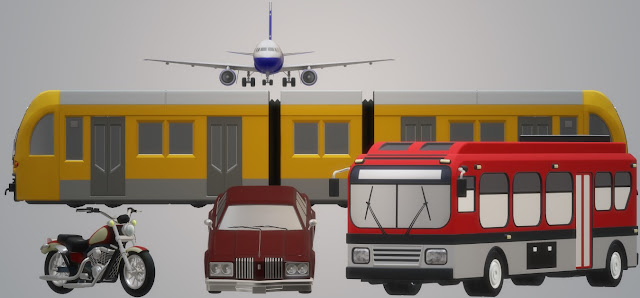Smart Transportation
Smart Transportation
It is a rare day that you won't take some form of transportation
A bus, train, or car to work. A bike to school. A plane for a business trip. And even if you don't leave your home, your life is still influenced by the transportation industry: virtually every tangible good—food, clothing, medicine, vehicles, computers—has been transported into your world from somewhere else.
Cities could not exist if we didn't have transportation systems to move people and goods in, out, and around them. It has been a leading driver behind globalization: shrinking distances, seeding the emergence of entirely new economies, and improving the quality of life for millions of people.
Yet many of our transportation systems are inadequate to serve the needs of the 21st century. By integrating technology and intelligence into the physical transportation infrastructure, we can improve capacity, enhance the traveler experience and make our transportation systems more efficient, safe, and secure.
"As many jobs as we have, if you're stuck in traffic for two hours a day, it affects your ability to do business," "It also affects your quality of life"
Jams are not only frustrating, but they are also a major contributor to air pollution, and that’s bad not just for our climate, but everybody’s health and living too. According to researchers, 138,258 people died of road accidents in India in 2012. As per the National Crime Records Bureau, as many as 461 people died and 1,301 more were injured every day in traffic accidents in the country during 2012. This makes it 19 deaths every hour—or more than one death every three minutes.
Then there is the economic cost of lost hours (both work and leisure) and delayed shipments. Drivers in the 10 most-congested cities in the country sit around 42 hours in traffic jams every year, wasting more than $121bn in time and fuel while doing so.
Before building more roads, bridges, and highways, policymakers need to evaluate how current transportation options can be used more effectively
We should also take care of cost when making the transportation smart so that the smart transportation does not go over smart that can not be affordable by all the peoples.
Show carrot of facilities and low price to encourage people using public transportation like buses and trains can reduce the road traffic.
Smart public transportation:
IoT-based network on stations and bus has some RFID system when it enters, it registers itself to the station so the tracking time schedule and running status of Bus can be achieved.
Public transportation vehicles like buses and trains can have cameras installed so can provide safety in security to travelers.
Smart Highway
A vehicle is given an RF tag and the highway has the RF network. If speed is increased, the tag can produce warning sound or lighting. If the vehicle is stopped for more than the pre-defined time then the respective Toll service center will be informed for help. If some vehicle misbehaves on the highway then traffic police can track it.
Solar panels on traffic lights so they can be powered using solar energy. To provide LCDs on road showing traffic information, Pollution monitoring, weather information, and diversion information. Those LCD devices can also be made operated from solar energy.
Street lights can be controlled based on traffic and timing so we can save a lot of energy.
Smart Vehicles
A safety pilot model deployment with about 3,000 vehicles equipped with the technology that broadcasts their GPS location and speed every 100 milliseconds.
We can use sensors in cars when the other vehicle on the front side is too near then it can blow a horn or slows down the speed
Solar Roadways
The idea of roads that can store solar energy? Well, it wasn’t just a theory. Solar Roadways is an IndieGoGo project that wants to install solar panels on glass roads, complete with LEDs and microprocessors. Glass is renewable, environmentally friendly, and its strength can be improved to be even stronger than steel
Despite being glass, the surface can be engineered for cars to be able to stop safely even when traveling at speeds of up to 80 mph – like on regular roads. The solar panel roads can even melt snow during winter and of course, the solar energy harnessed can be used to power electrical needs.
Smart Parking
If we talk about the city, one of the most major problems is the parking problem. We can make it smart by centrally connecting the parking availability with the server and displaying information outside the parking area. The parking area itself shows that here is the space available, that can be visible from the outside of the parking area. We can have solar panel roofs on the Parking area and use the energy for charging electric cars and parking lights.



Comments
Post a Comment